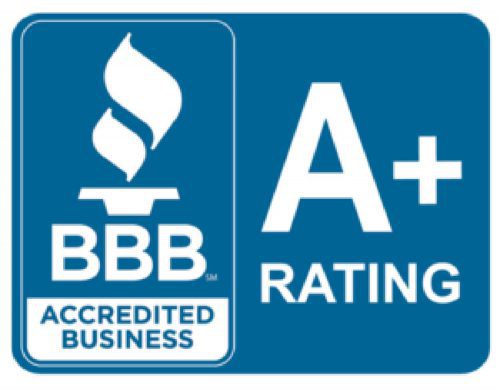Neonatal Therapeutic Hypothermia
Neonatal therapeutic hypothermia is a treatment to minimize permanent brain damage a baby may suffer from due to hypoxic-ischemic encephalopathy (HIE). HIE is newborn brain damage that is a result of limited blood flow and oxygen deprivation.
Neonatal therapeutic hypothermia involves moderately reducing a baby’s body temperature to improve health as well as slow the progression of an illness. It must be administered within six hours of the birth or the time when the baby was deprived of oxygen so that it can be effective. It’s also called cooling therapy.
The reason it’s used is because doctors have found that patients who are cold have better outcomes with certain injuries. The baby will be cooled down to below homeostasis so that they can recover; an ideal temperature is around 92.3 degrees Fahrenheit. The baby’s body temperature will need to be lowered for 72 hours in order to slow the metabolic rate. The cells will recover and the spread, permanence, and severity of the brain damage may be prevented.
A cooling cap for selective brain cooling will be given to the baby, or they may undergo cooling for their entire body. The medical professionals who are performing neonatal therapeutic hypothermia need to run various tests a monitor a baby’s health. They must test for as well as treat infections, make sure the baby is appropriately sedated, do EEG monitoring to control seizures, ensure the baby has normal electrolyte and glucose levels, conduct blood gas tests, and manage excessive acid in the blood, which is acidosis. The baby will need to be rewarmed and monitored after therapy is over, too.
Symptoms of Injuries Involving Neonatal Therapeutic Hypothermia
If your baby had hypoxic-ischemic encephalopathy (HIE), then doctors could begin treating your baby with neonatal therapeutic hypothermia.
HIE symptoms may arise before birth, in the neonatal period, or during infancy and early childhood.
Before birth, symptoms include:
- Abnormal fetal heart rate
- Vaginal bleeding
- Decreased fetal movement
- Maternal high blood pressure
- Abnormal contraction pattern
In the neonatal period, symptoms include:
- Breathing issues
- Difficulty feeding
- Low Apgar scores at the five- and 10-minute marks
- Organ failure or damage
- Coma
- Seizures
- Hyperalert or lethargic
- Abnormal response to light
In infancy or early childhood, symptoms include:
- Seizure disorder
- Impaired motor function
- Delayed growth
- Visual and hearing impairments
- Delayed development
A doctor will be able to diagnose HIE so that your baby can get the treatment they need to get better.
Treatment for Injuries Involving Neonatal Therapeutic Hypothermia
Once a baby is resuscitated and stabilized, they may go through neonatal therapeutic hypothermia treatment. Then, further treatment will depend on your baby’s condition. For example, babies with HIE may have associated conditions like epilepsy and cerebral palsy. Some of the additional treatments may include:
- Occupational and physical therapy so a baby can learn how to move and walk, as well as increase their strength, work on fine motor skills, and hone in on cognitive abilities.
- Behavioral and emotional therapy to improve a child’s social skills and help them deal with emotional issues.
- Recreational therapy, which involves participating in fun activities to treat stress and improve a child’s mood.
- Massage therapy to relieve tight muscles and stress as well as alleviate pain.
- Sensory integration therapy to help a child who has sensory processing issues.
- Surgical intervention as well as medication.
A child may only need to go through treatment for the short-term, but with a lifelong, incurable condition like cerebral palsy, they will need treatment for the rest of their life.
How Do I Know if Medical Malpractice Caused Injuries Involving Neonatal Therapeutic Hypothermia?
If you believe that your doctor engaged in medical malpractice before, during, or after labor, and that caused your baby to have HIE and need brain cooling treatment, then you may have a case.
HIE can happen if a mother or fetus are not being properly monitored before, during, and after birth, a mother needs a C-section but a doctor delayed it or instructed her to go through with a vaginal birth, or a doctor did not do neonatal therapeutic hypothermia when a baby needed it then that could amount to negligence.
For example, if a mother had diabetes and the doctor did not tell her how to care for herself during pregnancy, then the doctor may have been negligent. If a mother should have had a scheduled C-section because she was high-risk but the doctor insisted on a vaginal birth, that could have been negligent as well.
You won’t know if you have a case until you call a birth injury lawyer who has experience in this field. They will let you know what proof you need to try and get a settlement for medical malpractice. It’s tough to prove negligence, but with the right lawyer’s guidance, you may be able to do it successfully.
How Much Will I Receive From a Neonatal Therapeutic Hypothermia Settlement?
If your lawyer is able to prove that medical malpractice was a factor in your baby’s injury, then you may receive damages for:
- Medical bills
- Loss of companionship and enjoyment of life
- Pain and suffering
- Future medical care
- Loss of earning capacity
The amount of your damages is going to depend on how severe your baby’s injury is as well as how high the medical bills are going to be. If your baby has cerebral palsy, for instance, you’ll need money for current and future medical care since it’s a lifelong condition.
Settlement Offers in a Neonatal Therapeutic Hypothermia Case
Your lawyer will do their best to get you the settlement you deserve. Keep in mind that the more evidence you have, the better. Evidence could include photographs of your baby’s injuries, medical records, and witness statements from people who saw what happened.
Once you and your lawyer have your consultation and you provide the evidence, they will initiate your case and go to the defendant for a settlement. The defendant may settle, or you might have to take them to court. Typically, if the evidence is compelling, they may settle just so they don’t have to spend time and money in court and risk hurting their reputation among patients and other medical professionals.
Why Reach Out to a Birth Injury Lawyer?
Right now, you’re in a vulnerable place, and you need someone who’s going to stand up for you. A birth injury lawyer will fight for you to get the damages you need to move on with your life. You can focus on caring for your baby and spending time with your family instead of getting involved in litigation. At the same time, you’ll know your lawyer is advocating for you.
Neonatal Therapeutic Hypothermia Birth Injury Attorneys
If your baby suffered from an injury related to neonatal therapeutic hypothermia, then get in touch with Gilman & Bedigian today. We’ll work hard to get you the compensation you need.
Contact Gilman & Bedigian 24/7 for a free consultation at (800) 529-6162.











